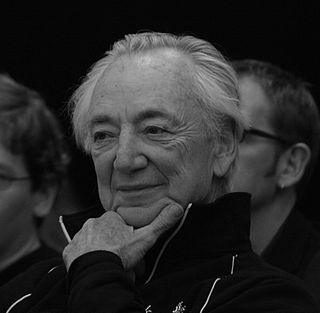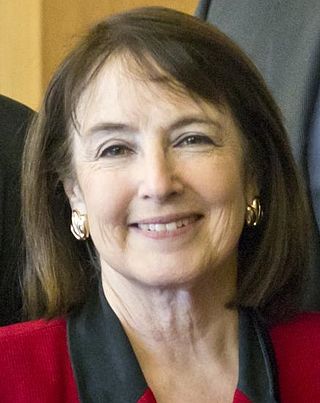An expert witness, particularly in common law countries such as the United Kingdom, Australia, and the United States, is a person whose opinion by virtue of education, training, certification, skills or experience, is accepted by the judge as an expert. The judge may consider the witness's specialized opinion about evidence or about facts before the court within the expert's area of expertise, to be referred to as an "expert opinion". Expert witnesses may also deliver "expert evidence" within the area of their expertise. Their testimony may be rebutted by testimony from other experts or by other evidence or facts.
Junk science is spurious or fraudulent scientific data, research, or analysis. The concept is often invoked in political and legal contexts where facts and scientific results have a great amount of weight in making a determination. It usually conveys a pejorative connotation that the research has been untowardly driven by political, ideological, financial, or otherwise unscientific motives.
Forensic psychology is the application of scientific knowledge and methods to assist in answering legal questions that may arise in criminal, civil, contractual, or other judicial proceedings. Forensic psychology includes research on various psychology-law topics, such as: jury selection, reducing systemic racism in criminal law, eyewitness testimony, evaluating competency to stand trial, or assessing military veterans for service-connected disability compensation. The American Psychological Association's Specialty Guidelines for Forensic Psychologists reference several psychology sub-disciplines, such as: social, clinical, experimental, counseling, and neuropsychology.
Medical malpractice is professional negligence by act or omission by a health care provider in which the treatment provided falls below the accepted standard of practice in the medical community and causes injury or death to the patient, with most cases involving medical error. Claims of medical malpractice, when pursued in US courts, are processed as civil torts. Sometimes an act of medical malpractice will also constitute a criminal act, as in the case of the death of Michael Jackson.
In United States federal law, the Daubert standard is a rule of evidence regarding the admissibility of expert witness testimony. A party may raise a Daubert motion, a special motion in limine raised before or during trial, to exclude the presentation of unqualified evidence to the jury. The Daubert trilogy are the three United States Supreme Court cases that articulated the Daubert standard:
In United States law, a harmless error is a ruling by a trial judge that, although mistaken, does not meet the burden for a losing party to reverse the original decision of the trier of fact on appeal, or to warrant a new trial. Harmless error is easiest to understand in an evidentiary context. Evidentiary errors are subject to harmless error analysis, under Federal Rule of Evidence 103(a) The general burden when arguing that evidence was improperly excluded or included is to show that the proper ruling by the trial judge may have, on the balance of probabilities, resulted in the opposite determination of fact.
A Drug Recognition Expert (DRE) is a law enforcement officer trained in a scientifically validated method to identify people whose driving is impaired by drugs other than, or in addition to, alcohol. All DREs follow the same 12 step procedure called a Drug Influence Evaluation (DIE), to purportedly determine which category of drugs is causing the driver to be impaired.
Admissible evidence, in a court of law, is any testimonial, documentary, or tangible evidence that may be introduced to a factfinder—usually a judge or jury—to establish or to bolster a point put forth by a party to the proceeding. For evidence to be admissible, it must be relevant and "not excluded by the rules of evidence", which generally means that it must not be unfairly prejudicial, and it must have some indicia of reliability. The general rule in evidence is that all relevant evidence is admissible and all irrelevant evidence is inadmissible, though some countries proscribe the prosecution from exploiting evidence obtained in violation of constitutional law, thereby rendering relevant evidence inadmissible. This rule of evidence is called the exclusionary rule. In the United States, this was effectuated federally in 1914 under the Supreme Court case Weeks v. United States and incorporated against the states in 1961 in the case Mapp v. Ohio. Both of these cases involved law enforcement conducting warrantless searches of the petitioners' homes, with incriminating evidence being described inside them. Consciousness of guilt is admissible evidence.
In common law, a foundation is sufficient preliminary evidence of the authenticity and relevance for the admission of material evidence in the form of exhibits or testimony of witnesses. Although the word "Foundation" does not appear in the Federal Rules of Evidence, scholars have argued that its existence is displayed, albeit implicitly, when viewing all the rules in context.
Kumho Tire Co. v. Carmichael, 526 U.S. 137 (1999), is a United States Supreme Court case that applied the Daubert standard to expert testimony from non-scientists.

Charles Rothwell Nesson is an American legal scholar. He is the William F. Weld Professor of Law at Harvard Law School and the founder of the Berkman Center for Internet & Society and of the Global Poker Strategic Thinking Society. He is the author of Evidence, with Murray and Green, and has participated in several cases before the U.S. Supreme Court, including the landmark case Daubert v. Merrell Dow Pharmaceuticals.
The Project on Scientific Knowledge and Public Policy (SKAPP), based at the George Washington University in Washington, D.C., examines the nature of science and the ways in which it is both used and misused in government decision-making and legal proceedings. Through empirical research, conversations among scholars, and publications, SKAPP aims to enhance understanding of how knowledge is generated and interpreted. SKAPP's mission is to promote transparent decision-making based on the best available science in order to promote public safety and health.
Pyridoxine/doxylamine, sold under the brand name Diclectin among others, is a combination of pyridoxine hydrochloride (vitamin B6) and doxylamine succinate. It is generally used for nausea and vomiting of pregnancy (morning sickness); even though its efficacy has not been proven and subsequent research has led to the removal of recommendations in medical journals.
In United States law, the Frye standard, Frye test, or general acceptance test is a judicial test used in some U.S. state courts to determine the admissibility of scientific evidence. It provides that expert opinion based on a scientific technique is admissible only when the technique is generally accepted as reliable in the relevant scientific community. In Daubert v. Merrell Dow Pharmaceuticals, 509 U.S. 579 (1993), the U.S. Supreme Court held that the Federal Rules of Evidence superseded Frye as the standard for admissibility of expert evidence in federal courts. Some states, however, still adhere to the Frye standard.
Hedonic damages is a legal term that first emerged in 1985 in the research of Stan V. Smith, who was a PhD student in economics at the University of Chicago. The term refers to damages for loss of enjoyment of life, the intangible value of life, as distinct from the human capital value or lost earnings value.

Nancy Gertner is a former United States district judge of the United States District Court for the District of Massachusetts. She assumed senior status on May 22, 2011, and retired outright from the federal bench on September 1, 2011. She is now a professor of practice at Harvard Law School.
Merrell Dow Pharmaceuticals Inc. v. Thompson, 478 U.S. 804 (1986), was a United States Supreme Court decision involving the original jurisdiction of the federal district courts under 28 U.S.C. § 1331.
Marion Merrell Dow and its predecessor Marion Laboratories was a U.S. pharmaceutical company based in Kansas City, Missouri, from 1950 until 1996.
Established in 1977, Atlantic Legal Foundation, also known as ALF, is a 501(c)(3) nonprofit, nonpartisan public interest law firm that litigates individual liberty, deregulation, free enterprise, and private property rights. The foundation was started to pursue a “deep commitment to redressing the bias against business which manifests itself in favor of narrow ‘consumer’ or ‘environmental’ concerns.” ALF has argued against environmental and worker regulations promulgated by federal agencies and works to promote “school-choice”. Atlantic Legal provides legal representation, without fee, to certain individuals, corporations, trade associations, parents, scientists, and educators.
The role of expert witnesses in English law is to give explanations of difficult or technical topics in civil and criminal trials, to assist the fact finding process. The extent to which authorities have been allowed to testify, and on what topics, has been debated, and to this end a variety of criteria have evolved throughout English case law.


